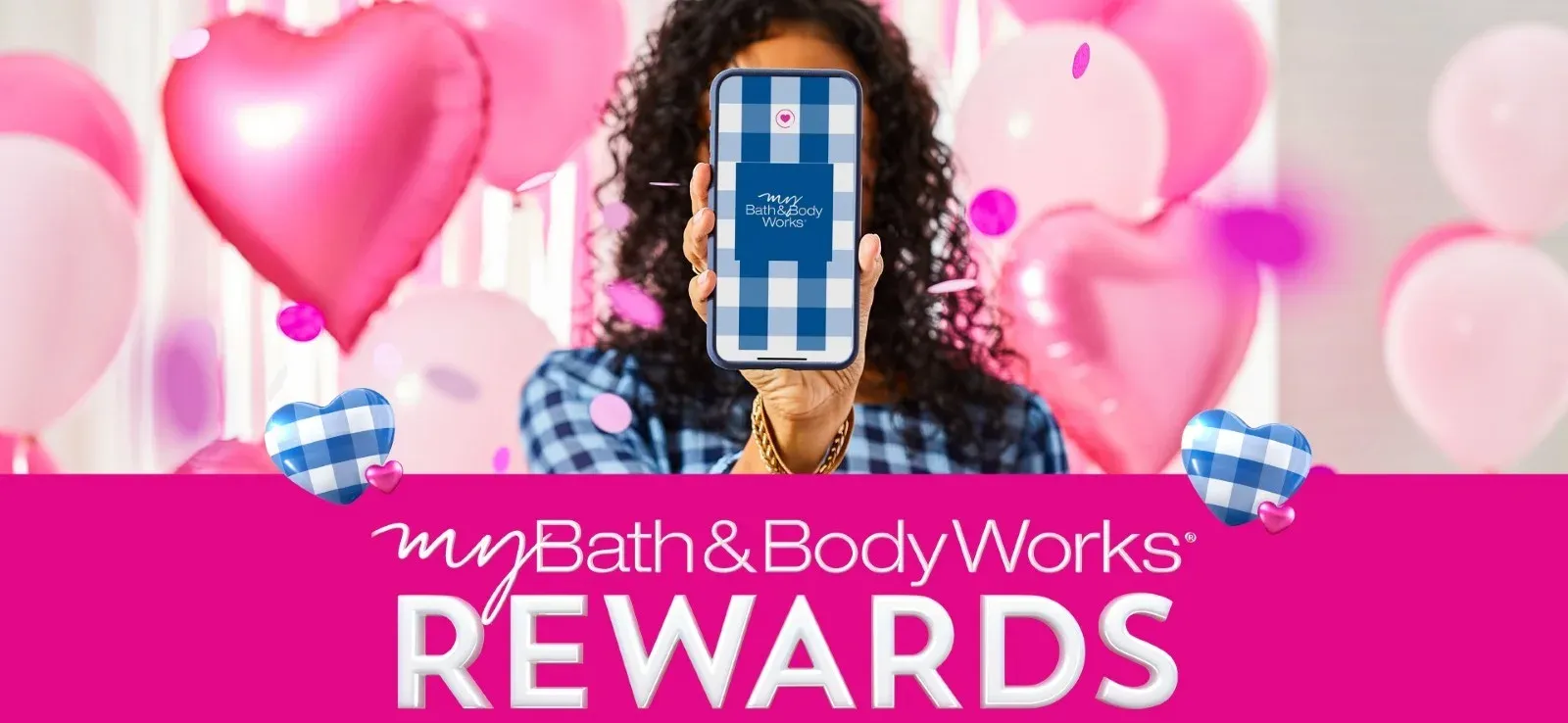Table of Contents
Businesses often seek innovative strategies to retain their customers and boost loyalty. Talking about loyalty, My Bath & Body Works program is a customer favorite for a reason. Every dollar you spend earns you 10 points, which adds up quickly and once you reach 1,000 points, you can choose any free product valued up to $16.95! That is like getting a luxurious lotion or a delightfully scented candle for free – simply for shopping at your favorite store.

By joining the program, you'll also gain access to exclusive events, new product launches, and other special offers. Compared to other loyalty programs, Bath & Body Works offers exceptional value.
One of the most effective methods to achieve this is through client reward programs. These programs are designed to incentivize repeat purchases and foster a stronger relationship between the business and its clients.
Notably, it increases customer retention, as clients feel valued and appreciated, leading to repeat purchases. Additionally, it enhances customer lifetime value (CLV), as loyal customers tend to spend more overtime. Moreover, such programs can attract new customers through referrals and word-of-mouth marketing.
Client reward programs come in various forms, each tailored to different business models and customer preferences. From points-based systems and tiered programs to cashback and subscription models, the options are diverse. Understanding these different types and their unique benefits is crucial for any business looking to implement an effective reward system.
Understanding your clients
Before designing a client reward program, it's essential to have a deep understanding of your target audience. Knowing who your customers are, what they value, and how they interact with your brand is the foundation of a successful program.
Consider demographic factors such as age, gender, income level, and location. These elements can influence the type of rewards that will appeal to your clients. Additionally, analyzing purchase behavior can provide insights into what products or services are most popular and which customers are the most loyal. Understanding preferred communication channels, whether it's email, social media, or mobile apps, ensures that your messaging reaches clients effectively.
Gathering this information can be achieved through surveys, focus groups, or analyzing existing customer data. Surveys can provide direct feedback on what customers want from a reward program, while focus groups can offer more in-depth insights. Leveraging customer data and analytics can help identify trends and preferences that might not be immediately obvious. By taking the time to understand your clients, you can design a reward program that truly resonates with them and encourages long-term loyalty.
Different types of client reward programs
Client reward programs come in various formats, each with its own set of advantages and applications. Here are some of the most popular types:
1. Points-based programs
In points-based programs, customers earn points for various actions such as purchases, reviews, or referrals. These points can be redeemed for discounts, products, or experiences. For example, Decathlon, a global leader in stylish and accessible sports equipment, offers a one-stop shop for all your athletic needs.
Here is what awaits you as a member:
Exclusive deals & savings: Get member-only discounts, promotions, and early access to new products.
Events & workshops: Dive deeper into your favorite activities with exclusive invitations to member-only events, workshops, and activities. Learn new skills, connect with fellow sports enthusiasts, and discover unique experiences curated just for you.
2. Tiered programs
Tiered programs offer various levels of benefits based on spending or engagement. Higher tiers unlock exclusive rewards and perks. An example of this is Amazon Prime, where members receive benefits like free shipping, early access to sales, and exclusive content. As customers move up the tiers, the perceived value of the program increases, encouraging more spending and engagement. For example, My Lancôme Rewards, a free loyalty program designed to pamper you, unlocks a world of benefits for Lancôme lovers. Simply sign up online or in-store to start earning points on purchases (10 points per dollar!), virtual services, and even charitable donations! Free shipping, exclusive offers, early access to hot new products, and a treasure trove of rewards await. Climb the tiers through your annual purchases or other activities, and enjoy increasing perks like bonus points, special gifts, and VIP access to events and launches. Redeem your points for a curated selection of Lancôme products, discounts, unique experiences, and more. (Remember to check program details for specific redemption options and points requirements.)
3. Cashback programs
Cashback programs give customers a percentage of their purchase amount back as cash or store credit. Credit card reward programs are a common example, where cardholders earn a percentage of their spending back as cashback. This type of program is straightforward and directly rewards customers for their spending, making it highly attractive.
Also, one example of cash back programs can be of CVS offers a free loyalty program, ExtraCare, that rewards you just for shopping! Sign up and receive an ExtraCare card to scan at checkout or use the convenient CVS app for a digital card. Every purchase (excluding some items like prescriptions) earns you 2% cashback in, which you can use to save on future purchases. Plus, earn up to an additional $50 in Pharmacy & Health ExtraBucks Rewards for filling prescriptions and getting important vaccinations
4. Subscription programs
Subscription programs offer exclusive access to products or services for a recurring fee. These programs often include additional benefits like free shipping, early access to sale events, or unique content. Amazon Prime is also an example here, providing members with a suite of benefits for a monthly or annual fee. Subscription models create a steady revenue stream and foster a sense of exclusivity among members.
5. Value-based programs
Value-based programs reward clients for actions that align with the brand's values. Patagonia's Worn Wear program is an example, encouraging customers to repair or resell Patagonia products instead of buying new ones. This not only promotes sustainability but also strengthens the brand's connection with customers who share similar values.
6. Gamification programs
Gamification programs engage customers through gamified experiences such as points, badges, and leaderboards. Xbox for instance, their Xbox Rewards program, seamlessly integrated with the wider Microsoft Rewards program, lets you earn points for more than just gaming. Explore different challenges within your favorite games, purchase content on the Xbox Store, take surveys, and even quizzes – all while gaining up points. This connection between your gaming actions and rewards fuels a sense of accomplishment and keeps you engaged. Redeem your points for – Xbox gift cards, Game Passes, sweepstake entries, charitable donations, and more!
Designing an effective client reward program
Creating a successful client reward program involves several key steps:
Set clear goals and objectives
Determine what you want to achieve with your program. Are you aiming to increase customer retention, boost average order value, or attract new customers? Having clear objectives will guide the design and implementation of your program.
Define the value proposition
Clearly outline the benefits your program will offer to clients. Ensure that the rewards are relevant and desirable to your target audience. The value proposition should be compelling enough to encourage customers to join and participate actively in the program.
Choose the right program type
Select a program format that aligns with your business goals and resonates with your target audience. Consider the different types of reward programs and choose the one that best fits your needs. For instance, a points-based program might be ideal for a retail business, while a subscription model could work well for a service-oriented company.
Make it easy to join and participate
A seamless sign-up process and clear communication are crucial for the success of your reward program. Ensure that joining the program is straightforward and that customers understand how to earn and redeem rewards. Use user-friendly platforms and communicate the benefits effectively.
Track and analyze data
Monitor the performance of your reward program regularly. Collect data on customer participation, reward redemption, and overall impact on sales and customer retention. Use this data to make informed adjustments to the program as needed. Continuous analysis helps in identifying what works and what doesn't, allowing for optimization over time.
By following these steps, businesses can design a client reward program that not only attracts new customers but also fosters long-term loyalty and engagement.
Case study
National car rental Emerald club collaborates with customers to improve customer experience
Introduction
National Car Rental, a leader in the car rental industry, sought to deepen customer engagement and improve the overall rental experience. They achieved this through the creation of the Emerald Club loyalty program and a unique online community called the Emerald Exchange.
Challenge
National Car Rental, like many companies, faced the challenge of truly understanding customer needs and experiences. Traditional methods like surveys often yielded limited and impersonal data. National needed a way to connect with customers on a deeper level, gather real-time feedback, and use that information to improve their offerings.
Solution
National Car Rental launched the Emerald Club loyalty program to incentivize frequent renters. They then took it a step further by creating Emerald Exchange, a private online community exclusive to Emerald Club members.
The results
The Emerald Exchange initiative proved to be a resounding success. Here are the key results:
- Increased Engagement: Active Emerald Club membership increased by 27%, indicating a rise in customer loyalty and program participation.
- Revenue Growth: National Car Rental company revenue increased by 32%, demonstrating the positive impact of the improved customer experience.
Conclusion
Client reward programs are a powerful tool for building customer loyalty and driving business growth. By understanding your clients, choosing the right type of program, and implementing it effectively, you can create a win-win situation where both your business and your customers benefit. Whether it's through points-based systems, tiered rewards, cashback offers, subscriptions, value-based incentives, or gamified experiences, the key is to provide meaningful and engaging rewards that resonate with your audience. With careful planning and continuous optimization, a well-designed client reward program can be a significant asset in today's competitive market.



